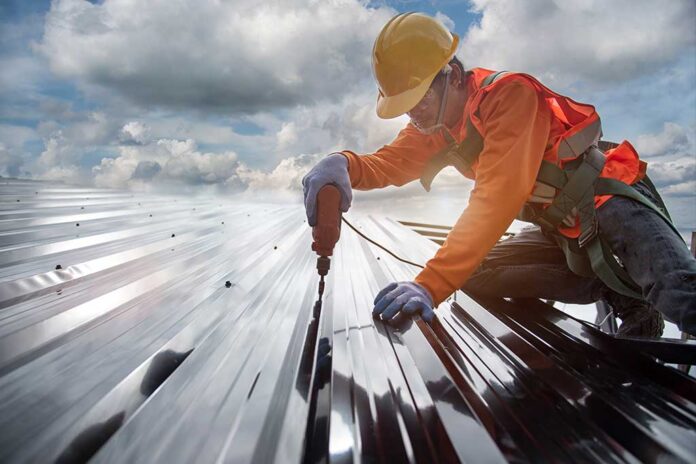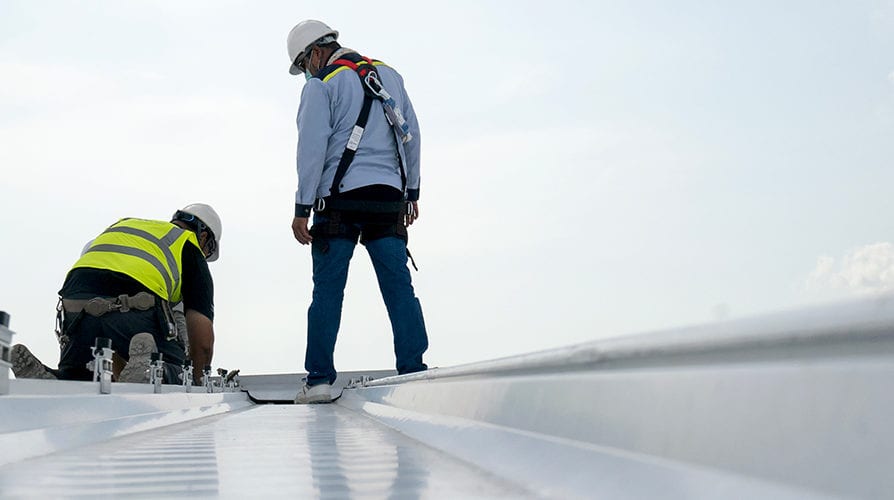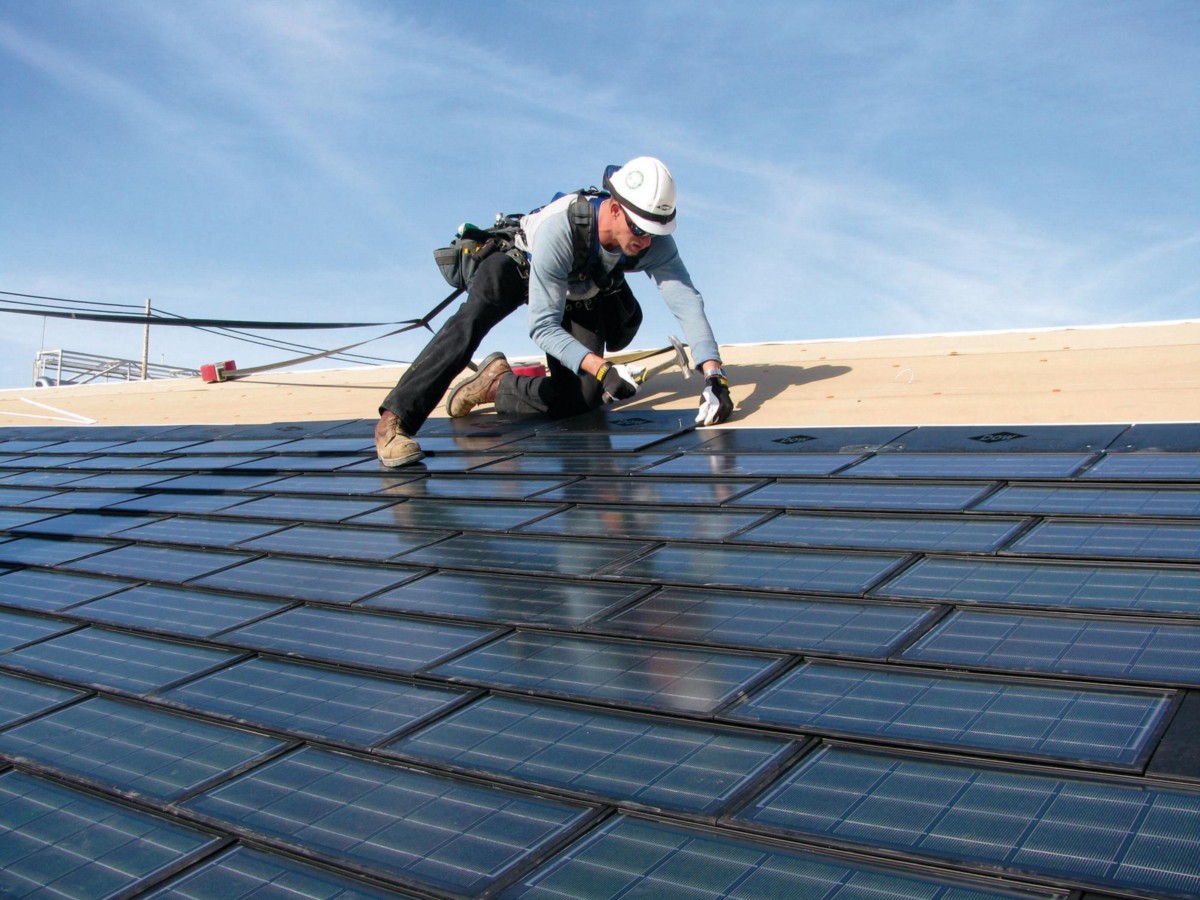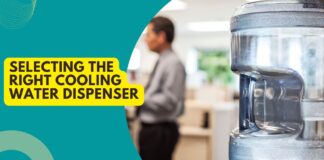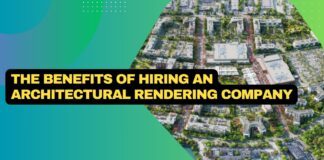When it involves commercial roofing systems, you could get stuck with the variety of options available. Selecting a quality roofing system is critical to protect your building. Therefore, it is right to consult a professional roofing company before going ahead with the roofing installation process. If you live in West Texas, Roof Master in Lubbock can guide you on the best roofing options, and offer you quality inspection and installation services.
Each roofing system is designed to match the distinctive kinds of buildings and environments. In this guide, we will tell you about the benefits and downsides of each commercial roofing system.
There are three types of commercial roofing systems that can be installed using seven types of materials.
Types of roofing systems
Flat Roofs: The most common type of commercial roofing system, flat roofs offer many benefits like:
- More cost-effective than the low slope or pitched roofs.
- Easier to install.
- Choice of roofing materials is greater for flat roofs compared to low slope or steep roofs. Owners can select from EPDM, PVC, TPO, bitumen, modified bitumen, and built-up roofing.
- Easy to install solar panels and satellite dishes on flat roofs.
- Easy to clean and maintain flat roofs because it allows ease of movement.
Downside:
- Offers poor drainage and holds standing water for long.
- There is a possibility of leaks and water damage inside the building due to material breakdown
Low-Sloped Roofs: Many factories, warehouses, and industrial buildings install low-sloped roofs. They may look flat from the ground but have a slight incline. Low-sloped roofs provide the following benefits:
- A slight pitch allows water to drain.
- Safer to install and maintain than pitched roofs.
- Easy to install solar panels and satellite dishes on low-slope roofs compared to steep ones.
- Owners can choose the same variety of roofing materials that are used on flat roofs.
Downside:
- There are strict building codes for low-sloped roofs.
- Heavy snow can add weight to the roof if it does not melt or is removed.
Pitched Roofs: Pitched roofs are installed more commonly on residential homes, but many commercial buildings install them together with flat or low-sloped roofs. Pitched roofs can be a good choice for the following reasons:
- The steep slope allows water to drain quickly.
- Easier for snow and other debris to roll off the steep slope.
- Doesn’t allow standing water and so reduces leakages.
- Requires less maintenance compared to flat or low-sloped roofs.
Downside:
- Expensive and difficult to install because of the steep incline and the difficulty in transferring materials.
Consult professional roofers if you are confused about the type of roofing installation that will best suit your building and environment. They will also help you choose from the variety of roofing materials listed below.
Types of roofing materials
Shingle Roofing: Shingle roofing is a popular choice for residential roofing, but many business owners also use them for its versatility and cost-efficiency. You get many forms of shingles like asphalt, ceramic, slate, and more in distinctive colors. Shingles are easy to install and repair, and nearly all professional roofers offer shingle roofing installation.
However, the lifespan of shingle roofing isn’t as much as compared to other commercial roofing materials. Shingles are vulnerable to high-speed wind and crack easily. They also are susceptible to moss and mold.
Metal Roofing: A good choice for flat and steep roofing systems, many building owners opt for metal roofs for their aesthetic appeal and long lifespan. Metal roofs’ average lifespan is around 20 to 50 years. Initially made with bronze, these roofing systems now make use of different metals like corrugated galvanized steel, zinc, aluminum, and stainless steel.
Metal roofing is prone to rust and corrosion. Therefore, an extra layer is added to defend the roof against moisture, pollution, and different environmental damages. Roofs made from copper or aluminum also are prone to denting. Hence, you should check with your roofer and ask for a material that incorporates a no-dent guarantee.
Built-Up (BUR) Membrane Roofing: One of the oldest roofing types, BUR roofs are made from alternate layers of tar and gravel. Thus, if one layer breaks, other layers protect the roof. These UV-resistant roofs are easy to repair and less expensive to install. In contrast to shingles, BUR creates a continuous sealed surface.
BUR roofs have a short life of around 20 years, and it is difficult to identify leakages in them as they age.
Single Ply roofing system: Single-ply roofs are a low-maintenance roofing system that has gained popularity in the recent past. These reliable commercial roofing systems are sold with a manufacturer’s warranty. The single-ply membranes come in two varieties:
- Thermoset EPDM membrane is a synthetic rubber roofing membrane that is long-lasting and offers robust protection against sunlight and pollution. These roofing membranes are not aesthetically attractive as they come in white and black rolls, and they can be punctured easily by falling debris or people walking on the roof.
- Thermoplastic Polyolefin (TPO) and Poly Vinyl Chloride (PVC) membranes are lightweight, UV resistant, and puncture-protected. They have air-welded beams that protect against fire, high-speed wind, and high temperatures. It is easy to clone TPO with cheap quality materials. Therefore, be cautious and buy only from registered sellers.
Green roofing system: Nature-sensitive building owners are rapidly installing green roofs or vegetative roofs on their buildings. Although green roof installations have numerous environmental benefits, there are many things to consider before choosing them.
Plants, multiple layers of soil, waterproofing, etc., can increase the weight of the roof.
Green roofs retain water over an extended period, which may cause seepage in the building. Therefore, it is critical to install a waterproofing thermoplastic membrane as part of the green roofing system. Nonetheless, Green roofs can last for 40-50 years with regular maintenance and monitoring.
Conclusion
When choosing a type of commercial roofing system for your building, consider if your roof is exposed to high wind, extreme temperatures, or any other environmental conditions? Also, consider the roof’s lifespan and costs and don’t forget to check the building codes.
We recommend consulting a professional commercial roofing contractor before making the final decision.

